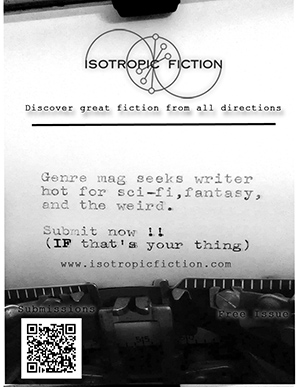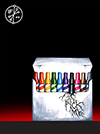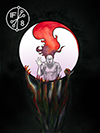Rarely Oftentimes, the writing life feels like an uphill climb. First comes the Dear Sir or Madam rejection, then the personalized rejection. Then, the editor gives you personal feedback and/or reasons why they couldn’t publish your work. After that, you cry into a  Blue Bonnet-sized bucket of chocolate ice cream and ask the gods why you can’t just be good enough, already. All of that time, all of that work! What you wouldn’t do for a hot, luscious, sexy, multi-paged contract in your inbox. You are the Charles Barkley of the writing world: pretty good, just not good enough to win a championship. You’re a Baby Ruth when all you want is to be a Snickers bar.
Blue Bonnet-sized bucket of chocolate ice cream and ask the gods why you can’t just be good enough, already. All of that time, all of that work! What you wouldn’t do for a hot, luscious, sexy, multi-paged contract in your inbox. You are the Charles Barkley of the writing world: pretty good, just not good enough to win a championship. You’re a Baby Ruth when all you want is to be a Snickers bar.
I know it may be hard to believe (har har), but you’re not alone. You’re actually in really good company.
Every now and then Pretty much every week or so, I read about a classic or popular book that had been rejected a bajillion times by every publisher on the planet until one said yes. Here is a list of those books, just for you to keep handy. May it bless you and keep you, and may it help pry your fingers off of the tub of Rocky Road.
1. Chicken Soup for the Soul by Jack Canfield and Mark Victor Hansen. Rejected 140 times, one publisher claiming it was “too positive.”
2. Dubliners by James Joyce. Rejected 22 times, only sold 379 copies in the first year (James Joyce bought 120 of them).
3. Zen and the Art of Motorcycle Maintenance by Robert Pirsig. Rejected 121 times.
4. Carrie by Stephen King. Rejected 30 times. We have Tabitha King to thank for it seeing the light of day, as she dug it out of the trash when King threw it away.
5. Gone with the Wind by Margaret Mitchell. Rejected 38 times. Mitchell won a Pulitzer for her efforts.
6. A Wrinkle in Time by Madeleine L’Engle. Rejected 26 times. Awarded a Newbery Medal.
7. Anything by C.S. Lewis. Lewis amassed over 800 rejections before selling a single piece of writing.
8. The Diary of Anne Frank. Rejected 15 times. Recieved the editorial comment, “This girl doesn’t, it seems to me, have a special perception or feeling which would lift that book above the curiosity level.”
9. The Tale of Peter Rabbit by Beatrix Potter. After receiving so many rejections, Potter was forced to publish the book herself.
But my favorite story of all time goes to Dune. You can read an interesting story from Frederik Pohl here, but here’s the abridged version of Dune‘s publishing history. Frank Herbert spent years trying to get a publisher to pick up Dune, and received about 20 rejections. After years and lots of revisions, he sold the book to a small publisher that was known for mechanical manuals for automobiles and motorcycles. It’s now one of the most celebrated science fiction novels of all time.
Keep your head up, and keep on going. You really don’t know when or from where your big break is going to come.

 Let’s be frank. Writers are sympathetic characters, editors are not. Writers toil in romanticized isolation but get invited to the coolest parties. They create and share every moment of joy and sorrow experienced by not just one character, but by an entire world of their creation. They brainstorm and draft, rewrite and polish, and then one day they mass submit that perfect story to the editorial altars.
Let’s be frank. Writers are sympathetic characters, editors are not. Writers toil in romanticized isolation but get invited to the coolest parties. They create and share every moment of joy and sorrow experienced by not just one character, but by an entire world of their creation. They brainstorm and draft, rewrite and polish, and then one day they mass submit that perfect story to the editorial altars. As a writer, I’ve worked with a variety of editors, good and bad, from newspapers and books to literary and genre magazines. And as an editor, I’ve worked with sci-fi writers and romance novelists, journalists, and poets. There are countless essays about what editors are looking for, what their major peeves are, and how you can improve or kill your chances of getting published. Some of my favorite can be found right here on The Fictorians. After you’re done reading my essay, make it a point to check out Joshua Essoe’s “
As a writer, I’ve worked with a variety of editors, good and bad, from newspapers and books to literary and genre magazines. And as an editor, I’ve worked with sci-fi writers and romance novelists, journalists, and poets. There are countless essays about what editors are looking for, what their major peeves are, and how you can improve or kill your chances of getting published. Some of my favorite can be found right here on The Fictorians. After you’re done reading my essay, make it a point to check out Joshua Essoe’s “ If you’re a writer reading this, think about the last time you asked your friend, husband, wife, or dog to read the latest draft of your story. Did you notice how their eyes darted toward the door in a desperate attempt to escape? Did they sigh? Did they take your pages only to not have read them a month later? Did they say it was nice? Editors will never treat you like that. This bears repeating: editors want to read your work. You are their raison d’être.
If you’re a writer reading this, think about the last time you asked your friend, husband, wife, or dog to read the latest draft of your story. Did you notice how their eyes darted toward the door in a desperate attempt to escape? Did they sigh? Did they take your pages only to not have read them a month later? Did they say it was nice? Editors will never treat you like that. This bears repeating: editors want to read your work. You are their raison d’être. When a form letter goes out, the work that came in most likely was riddled with grammatical and spelling errors, displayed a total disregard of the publication’s submission guidelines, and/or wasn’t even a complete story. The form letter allows the editor to exemplify a level of professionalism with which the writer may not have treated his or her work.
When a form letter goes out, the work that came in most likely was riddled with grammatical and spelling errors, displayed a total disregard of the publication’s submission guidelines, and/or wasn’t even a complete story. The form letter allows the editor to exemplify a level of professionalism with which the writer may not have treated his or her work.
